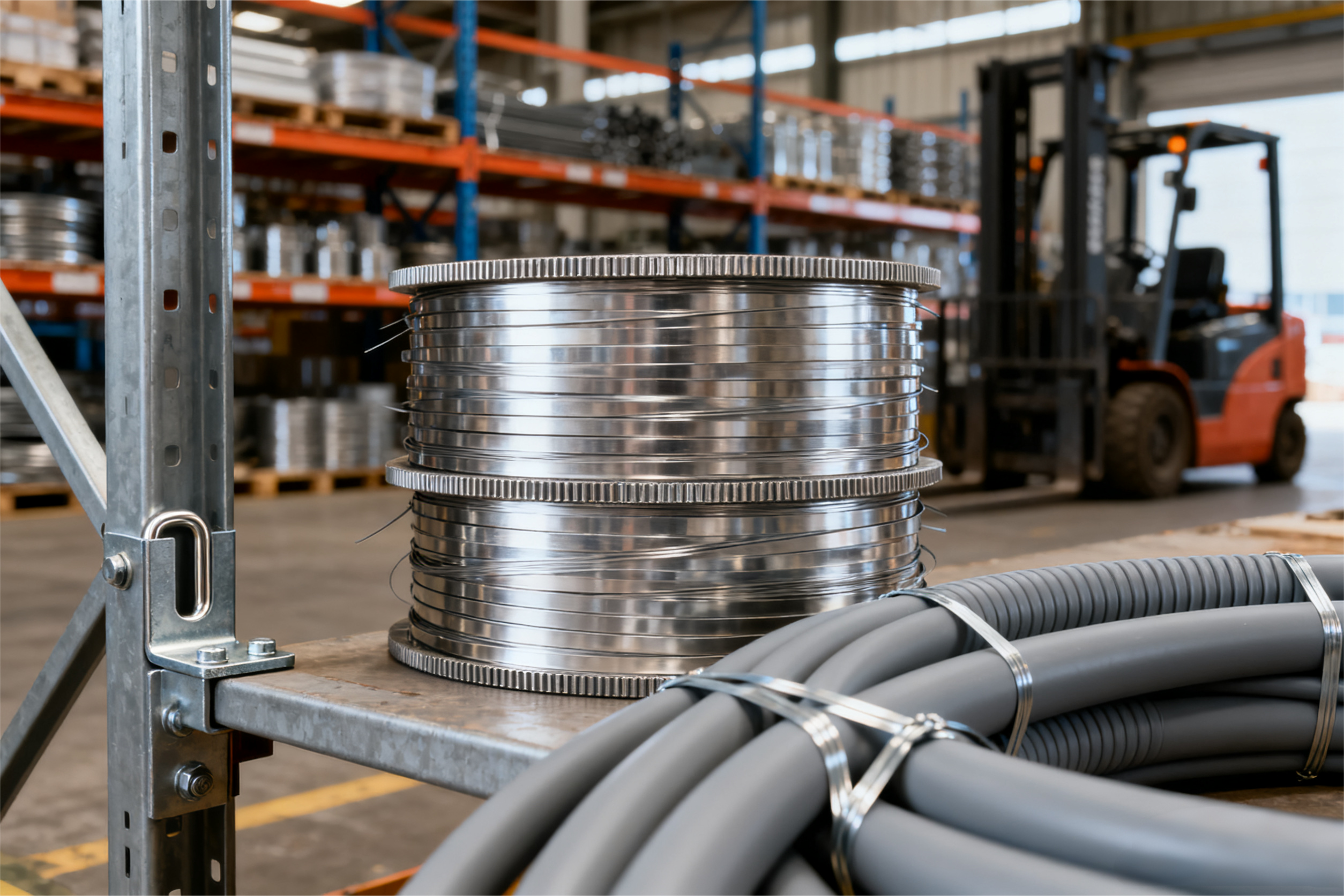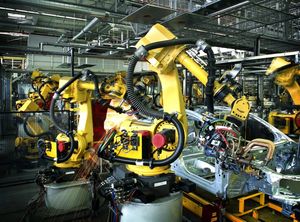Stainless Steel Cable Ties provide exceptional durability and reliability for your industrial needs. By investing in these robust fastening solutions, you can achieve significant long-term cost savings and efficiency improvements. With the global market expected to grow at a CAGR of 4-5% from 2025 to 2030, the demand for Stainless Steel Epoxy Coated Cable Ties and other stainless steel cable ties will only increase as industries evolve.
Key Takeaways
- Investing in stainless steel cable ties ensures long-term durability and reliability, reducing maintenance costs significantly.
- These ties excel in harsh environments, offering superior corrosion and temperature resistance compared to traditional nylon ties.
- Choosing stainless steel cable ties supports environmental sustainability, as they are fully recyclable and contribute to less waste.
Composition and Properties of Stainless Steel Cable Ties
Material Composition
Stainless steel cable ties are primarily made from high-quality alloys, with 304 and 316 stainless steel being the most common choices. The 304 alloy is popular for general applications due to its excellent balance of strength and corrosion resistance. On the other hand, 316 stainless steel is ideal for environments that demand superior corrosion resistance, such as marine and chemical applications. This choice of materials ensures that you receive a product that can withstand harsh conditions while maintaining its integrity.
Key Properties
The properties of stainless steel cable ties make them a standout option for various industrial applications. Here are some key features:
- Corrosion Resistance: Stainless steel maintains its molecular structure under extreme conditions. Unlike nylon cable ties, which degrade over time, stainless steel cable ties resist rust and pitting corrosion, especially in aggressive environments. This durability makes them a reliable choice for professionals needing long-lasting solutions.
- Tensile Strength: These ties offer impressive tensile strength, with values typically ranging from 100 lbs and up. They are suitable for industrial, food, and medical applications, ensuring that they can handle demanding tasks without failure.
- Temperature and Chemical Resistance: Stainless steel cable ties can endure a wide temperature range, from -112°F (-80°C) to 1000°F (538°C). They also exhibit excellent chemical resistance, making them suitable for various applications, including those exposed to harsh chemicals.
By choosing stainless steel cable ties, you invest in a product that combines strength, durability, and versatility, making it a smart choice for your fastening needs in 2025.
Applications of Stainless Steel Cable Ties Across Industries

Stainless steel cable ties play a crucial role in various industries, providing reliable solutions for securing and managing cables, pipes, and other components. Their strength and durability make them indispensable in demanding environments. Let’s explore how these ties are utilized across different sectors.
Manufacturing
In manufacturing plants, stainless steel cable ties are essential for maintaining order and safety. You can use them to secure cables, pipes, and hoses effectively. Their construction from high-quality 304 or 316 stainless steel allows them to withstand harsh conditions, including exposure to corrosion, heat, fire, and UV light. Here are some common applications:
- Securing cables
- Bundling pipes
- Holding hoses in place
Additionally, these ties help prevent vibrational damage during transit and are vital for securing heavy machinery. They meet stringent safety standards, such as UL 62275 and ISO 9001, ensuring they perform reliably in industrial settings.
| Standard | Key Requirements |
|---|---|
| UL 62275 | Tensile strength, temperature ratings, flammability, UV resistance |
| NEMA Types | General purpose, weather resistant, heat stabilized, etc. |
| IEC 62275 | Global standards for cable ties and mounting devices |
| ISO 9001 | Quality management systems and continuous improvement |
| RoHS & REACH | Limit the use of harmful materials in cable ties |
Construction
In the construction industry, stainless steel cable ties are invaluable for structural support. You can use them to bundle and secure cables, pipes, and ductwork, ensuring everything stays in place. Their strength and resistance to environmental factors make them ideal for both indoor and outdoor applications. Here are some specific uses:
- Commonly used in HVAC systems to secure ductwork and pipes.
- Resistant to UV rays and moisture, making them suitable for harsh conditions.
- Used to secure HVAC components due to their durability and ability to withstand extreme temperatures.
These ties not only enhance safety but also improve efficiency on construction sites. Their high corrosion resistance ensures they remain effective even in challenging environments.
| Advantage | Description |
|---|---|
| Corrosion Resistance | Extremely high corrosion resistance, ideal for outdoor use. |
| Temperature Resistance | Can withstand extreme temperature changes. |
| Strength | High strength for heavy-duty fixings, suitable for various applications. |
Electrical and Telecommunications
In the electrical and telecommunications sectors, stainless steel cable ties are essential for effective cable management. Their exceptional strength and durability make them ideal for securing cables in various environments. You can rely on them to withstand extreme conditions that would compromise standard nylon ties. Here’s how they contribute to safety and organization:
- The Pan-Steel® System of stainless steel cable ties is designed to endure demanding environments, offering a usable life of over 30 years.
- Their smooth edges prevent damage to cable insulation, enhancing safety during installation and maintenance.
- Stainless steel cable ties help prevent hazards associated with loose cabling, significantly improving the safety of electrical installations.
These ties also meet regulatory requirements, ensuring they are suitable for various applications.
| Requirement Type | Details |
|---|---|
| Material Compliance | Use high-quality, certified materials suitable for the application. |
| Tensile Strength | Verify the cable tie meets minimum loop tensile strength standards. |
| Environmental Resistance | Check for UV resistance, heat stabilization, fire-retardant properties, and chemical resistance. |
| Certification and Labeling | Ensure clear, permanent markings on each tie, including material type and certification marks. |
| Application Suitability | Select ties based on their intended use, differentiating between light-duty and heavy-duty. |
| Installation Standards | Follow recognized standards to ensure proper installation and minimize risks. |
By investing in stainless steel cable ties, you enhance the safety and efficiency of your operations across these critical industries.
Benefits of Stainless Steel Cable TiesDurability and Longevity
When you choose stainless steel cable ties, you invest in a product designed for durability. These ties can last between 15 to 20 years in harsh industrial environments. This lifespan is significantly longer than that of nylon or galvanized steel ties, which require replacement 87% less often. Imagine the savings in maintenance costs!
Tip: In applications like chemical plants or outdoor installations exposed to saltwater, stainless steel cable ties excel. Their resistance to corrosion and extreme temperatures ensures they maintain strength where plastic alternatives fail.
In offshore wind farms, for example, these ties withstand the corrosive salty sea air, keeping power lines secure for years. Power companies also rely on them for outdoor substations, where plastic ties degrade under harsh sunlight.
Cost-Effectiveness
Switching to stainless steel cable ties can lead to significant long-term savings. While the initial cost may be higher compared to traditional fastening methods, the durability and low maintenance requirements make them more cost-effective over time.
| Aspect | Stainless Steel Cable Ties | Traditional Fastening Methods |
|---|---|---|
| Initial Cost | Higher | Lower |
| Durability | High | Moderate |
| Maintenance Requirements | Low | High |
| Long-term Cost Effectiveness | More Cost-effective | Less Cost-effective |
| Corrosion Resistance | Excellent | Poor |
| Repair/Replacement Costs | Lower | Higher |
By investing in stainless steel cable ties, you reduce the frequency of replacements and repairs. Their ability to resist corrosion means you won’t need to worry about frequent maintenance, especially in outdoor or industrial settings.
Environmental Sustainability
Stainless steel cable ties are not only durable and cost-effective; they are also environmentally friendly. Unlike nylon cable ties, which are made from petroleum-based plastic and contribute to landfill waste, stainless steel ties are fully recyclable. This means you can process and reuse them in new products, reducing your environmental footprint.
| Certification | Description |
|---|---|
| RoHS | Restricts hazardous substances in electrical and electronic equipment. |
| REACH | Addresses the production and use of chemical substances and their potential impacts on human health and the environment. |
| ISO | International standard for quality management systems. |
These certifications ensure that when you choose stainless steel cable ties, you are making a responsible choice for the environment. Their recyclability and long lifespan contribute to less waste and a more sustainable future.
By investing in stainless steel cable ties, you not only enhance the efficiency and safety of your operations but also contribute positively to the environment.
Stainless steel cable ties are a reliable choice for various industrial applications. You can trust their strength and durability, especially in cold environments where nylon ties fail. Their cost-effectiveness shines through in long-term savings, reducing replacement needs. By choosing stainless steel cable ties, you enhance operational efficiency and promote sustainability through their recyclability and longevity.
Tip: Invest in stainless steel cable ties today to secure your projects for a more efficient and eco-friendly future!
FAQ
What are the main advantages of using stainless steel cable ties?
Stainless steel cable ties offer durability, corrosion resistance, and long lifespan, making them ideal for harsh industrial environments.
How do stainless steel cable ties compare to nylon ties?
Stainless steel ties outperform nylon ties in strength, temperature resistance, and longevity, ensuring reliable performance in demanding applications.
Are stainless steel cable ties recyclable?
Yes, stainless steel cable ties are fully recyclable, making them an environmentally friendly choice for your fastening needs.
Media Contact
Company Name: Xinjing Stainless Steel Co., Ltd.
Email: Send Email
Country: China
Website: https://www.wowstainless.com/






